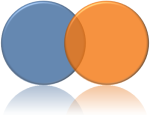 Often, the least hyped technologies are the most effective, get the widest adoption, and have the greatest impact. Carrier aggregation is one such technology that I don’t think it received its fair share of attention. LTE did bring a number of new features that were not available in 3G, such as MIMO. But MIMO was already deployed in other technologies including both Wi-Fi and WiMAX. Carrier aggregation on the other hand developed by the requirement to achieve higher data rates in LTE network. True channel bonding is a feature of Wi-Fi, but it applies to adjacent channels. Carrier aggregation on the other hand combines distinct channels in different bands. From that perspective, I am not aware of any wireless technology that has implemented carrier aggregation.
Often, the least hyped technologies are the most effective, get the widest adoption, and have the greatest impact. Carrier aggregation is one such technology that I don’t think it received its fair share of attention. LTE did bring a number of new features that were not available in 3G, such as MIMO. But MIMO was already deployed in other technologies including both Wi-Fi and WiMAX. Carrier aggregation on the other hand developed by the requirement to achieve higher data rates in LTE network. True channel bonding is a feature of Wi-Fi, but it applies to adjacent channels. Carrier aggregation on the other hand combines distinct channels in different bands. From that perspective, I am not aware of any wireless technology that has implemented carrier aggregation.
If necessity is the mother of invention, then carrier aggregation has a few mothers! Data rate requirement is one, but another very important aspect is spectrum fragmentation. To date, there are 44 bands defined for LTE operation between 400 and 3800 MHz. Each band supports anywhere from 2 to 6 different channelizations for a total of 159 different profiles! Trunking theory stipulates higher efficiency and greater capacity in wider channels than narrow channels. In fact, a 20 MHz LTE channel carries 103% more capacity on average than 10 MHz channel – that’s a 3% gain in capacity. Carrier aggregation is therefore a mean to achieving greater capacity with fragmented spectrum.
Carrier aggregation is an important development because it is the first step along the long road to realize cognitive radio implementation in wireless networks. Cognitive radio involves the capability of spectrum sensing to identify suitable bands for operations (which is a very challenging task). The radio would in effect ‘stitch’ different bands together to meet the application performance requirements. The importance of this cannot be overstated. Spectrum utilization is highly variable and can include long idle periods. This encouraged the concept of spectrum sharing techniques in which cognitive radio will play a part. Carrier aggregation is therefore a first step on that road.
Implementation of carrier aggregation is the result of integrating and optimizing multiple developments. On the handset side, we now have available on the market wideband RFICs and frontend chipsets with highly integrated power amplifiers that span the entire sub 6 GHz spectrum: example is the Qualcomm RF360 chipset. We also have developments in antenna design and tuning and matching techniques that allow support for multiple bands. Although implementation on the base station side can be easier because some parameters such as space and cost can be more relaxed than the handset side, numerous challenges related to integrating multiple high-power carriers had to be resolved. Finally, the LTE functions to support carrier aggregation had to be put in place such as cross-scheduling.
There have been a number of trials of carrier aggregation to date. Commercially, it is operational on all three carrier networks in Korea. It is the first feature of LTE-Advanced (Release 10) to be deployed. Users can therefore expect better capacity which translates also into lower delay. Operators can use carrier aggregation to support a greater number of users in a single cell. Furthermore, small cells and hetnets can make use of carrier aggregation to coordinate operation and avoid interference. This can be particularly advantageous when coupled with shared spectrum access in bands such as 3.5 GHz (US) and 2.3 GHz (Europe).

Probability Distribution Function of LTE Advanced Carrier Aggregation Downlink Throughput. (Source: Signals Research Group)
| Country | Operator | Max Downlink Speed (Mbps) |
| Australia | Telstra (2×20 MHz, 1800/2600 MHz, Ericsson) | 300 |
| Australia | Optus (TD-LTE, 2×20 MHz, 2300 MHz, Huawei)(TD-LTE, 4×20 MHz, 2300 MHz, Huawei) | 160520 |
| Austria | A1 Telekom Austria (NSN) | 580 |
| France | SFR (2×10 MHz, 800/2600 MHz, Ericsson) | 174 |
| China | China Mobile (TD-LTE, 2×20 MHz, ZTE) | 233 |
| Japan | NTT DOCOMO | 300 |
| Philippines | Smart Communications (Huawei) | 211 |
| Portugal | Optimus (Huawei) | 300 |
| Russia | Yota (Huawei) | 300 |
| South Africa | Telkom Mobile (TD-LTE, 2×20 MHz, 2300 MHz, Huawei) | 200 |
| South Korea | SK Telecom (2×10 MHz 800/1800 MHz, Samsung, Ericsson, NSN) | 150* |
| South Korea | LG U+ (2×10 MHz, 800/2100 MHz, Samsung, Ericsson, NSN) | 150* |
| South Korea | Korea Telecom (2×10 MHz, 900/1800 MHz, Samsung, Ericsson, NSN) | 150* |
| Turkey | Turkcell (Huawei) | 150900 (Lab) |
| UK | EE (2×20 MHz, 1800/2600 MHz) | 300 |
|
Table 1. Carrier Aggregation Trials & Deployments (*) |
||
As we evolve from 4G LTE/LTE-Advanced, carrier aggregation is set to play a major role in any future 5G technologies through cognitive radio and in what is called “super wideband spectrum.” That is what makes carrier aggregation such an important development in wireless technologies. The potential for innovation is truly great and we are still at the beginning of this journey.


Pingback: Carrier Aggregation and the Road to Cognitive Radio and Superwide Spectrum | ytd2525
Pingback: Blogpost by Frank Rayal: Carrier Aggregation and the Road to Cognitive Radio and Superwide Spectrum | Jawad Khan's Blog